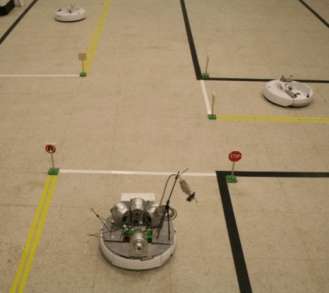| AI At The Crossroads - predicting who is going to run a red light |
| Written by Mike James |
| Thursday, 01 December 2011 |
|
In the future when all cars are driven by robots the roads should be safer for all. But what about the interim where we still have humans making less than perfect judgements - can AI help us? The aim of replacing all drivers with robotic systems is mostly motivated by making things safer but you might be able to do the job with less than a full replacement for the human element. Augmented driving systems seem to be about to enter production with devices that tell the driver if they are too close to another vehicle and so on. However, perhaps we can do better than just providing sensor information. Have you ever been sitting waiting for the lights to change and noticed a car approaching the junctions and thought it was unlikely to stop even if the lights did change? Now researchers at MIT have implemented an algorithm that can make the same fine judgement. The idea is very simple. Take measurements of speed, deceleration and distance from the light and use a simple learning algorithm to predict when a driver might pose a threat. The algorithm is pure AI in that it uses a Support Vector Machine to do the classification and a Bayesian filter to model the possible paths. As well as detecting the threat it also recommends a course of action - stop, continue, accelerate. The algorithm was developed using a robotic test bed modelling an intersection - see the video. A human controlled one of the cars while robots drove the cars that occasionally run the lights.
So far the algorithm hasn't been sufficiently real world tested, but it seems to be better than alternative methods and generates fewer false alarms. It is claimed that the method also detects potential light runners up to two seconds before they encounter the intersection providing plenty of time to take avoiding actions. In fact there is a "sweet spot" between one and two seconds where the predictions are most accurate. After analysing 15,000 approaches to a junction in Virginia they found that it was 85% accurate in predicting when cars would go through a red light.
The big problem in implementing it for real is that it relies on everyone driving smart cars with WiFi connections so that they can exchange data about each other using vehicle-to-vehicle communication, V2V. While this is being explored by many major car manufacturers, it is still a long way from being a standard. In the meantime, the team is looking into using the same algorithm to automate air traffic control by predicting the behavior of aircraft. One thing is clear; such AI systems are going to be making their way into increasing numbers of safety critical systems in the future. It is easy to see that if they take control then some sort of certification is going to be required. What about devices that simply offer advice? If an AI unit fails to warn you of a red light runner and you crash - well it might have helped and the crash would have happened anyway. What happens, however, when the box falsely warns that a car is about to run a light and you brake hard, hard enough to injure your passengers? AI devices that augment skills also need careful examination. More information:Threat Assessment Design for Driver Assistance System at Intersections by Georges Aoude, Brandon Luders, et al. Related articles:Robot cars - provably uncrashable? Sebastian Thrun on Google's driverless car China and the rise of the driverless car Augmented Reality road accidents
To be informed about new articles on I Programmer, subscribe to the RSS feed, follow us on Google+, Twitter or Facebook or sign up for our weekly newsletter.
|
| Last Updated ( Saturday, 29 February 2020 ) |


